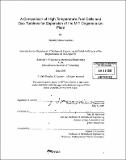| dc.contributor.advisor | John B. Heywood. | en_US |
| dc.contributor.author | Jacobus, Headley Stewart | en_US |
| dc.contributor.other | Massachusetts Institute of Technology. Dept. of Mechanical Engineering. | en_US |
| dc.date.accessioned | 2006-05-15T20:41:02Z | |
| dc.date.available | 2006-05-15T20:41:02Z | |
| dc.date.copyright | 2005 | en_US |
| dc.date.issued | 2005 | en_US |
| dc.identifier.uri | http://hdl.handle.net/1721.1/32945 | |
| dc.description | Thesis (S.B.)--Massachusetts Institute of Technology, Dept. of Mechanical Engineering, 2005. | en_US |
| dc.description | Includes bibliographical references (leaf 44). | en_US |
| dc.description.abstract | In the past decade the MIT campus has grown by leaps and bounds. New buildings such as the Zesiger Sports Center, Stata Center, Simmons Hall, and Sidney-Pacific Street Dorm are only some of the buildings erected in the past decade. Such extreme campus growth means that the MIT campus is quickly outstripping its ability to produce steam and electricity. At the moment, MIT's campus peak demand is 31 MW of electricity and 372,282 lbs/hr of steam' yet the MIT cogeneration plant only produces 21 MW of power and 230,000 lbs/hr of firm steam production2. In addition to this desire to satisfy its own energy requirements, MIT must also minimize greenhouse emissions from the campus. In 2004 MIT completed a feasibility study to expand the campus cogeneration plant by installing two new gas turbines and Heat Recovery Steam Generators. I have endeavored to study the feasibility of using fuel cells as a replacement to these gas turbines. Specifically I examined UTC Power's PureCellTM 200, Siemens Westinghouse's SFC 200, and Fuel Cell Energy's DFC 3000. These three fuel cells represent a range of fuel cell technology available for commercial use now or within the next two years. | en_US |
| dc.description.abstract | (cont.) All three fuel cells could be viable for distributed cogeneration around campus, but do not seem suitable for use in an expansion housed solely in Building 41. All three fuel cells require large footprints to produce the 11 MW called for in the planned plant expansion. These three fuel cells could be made more attractive for the MIT cogeneration plant by augmenting their thermal production with either direct natural firing in the fuel cell exhaust or coupling the fuel cell with a gas turbine. Fuel cells will increase the electrical efficiency of the gas turbine and, depending on the fuel cell, may also increase the overall efficiency of the gas turbine. Increasing overall efficiency will result in decreased CO2 emissions and decreased fuel costs for MIT. | en_US |
| dc.description.statementofresponsibility | by Headley Stewart Jacobus. | en_US |
| dc.format.extent | 50 leaves | en_US |
| dc.format.extent | 4300535 bytes | |
| dc.format.extent | 4301109 bytes | |
| dc.format.mimetype | application/pdf | |
| dc.format.mimetype | application/pdf | |
| dc.language.iso | eng | en_US |
| dc.publisher | Massachusetts Institute of Technology | en_US |
| dc.rights | M.I.T. theses are protected by copyright. They may be viewed from this source for any purpose, but reproduction or distribution in any format is prohibited without written permission. See provided URL for inquiries about permission. | en_US |
| dc.rights.uri | http://dspace.mit.edu/handle/1721.1/7582 | |
| dc.subject | Mechanical Engineering. | en_US |
| dc.title | A comparison of high temperature fuel cells and gas turbines for expansion of the MIT Cogeneration Plant | en_US |
| dc.type | Thesis | en_US |
| dc.description.degree | S.B. | en_US |
| dc.contributor.department | Massachusetts Institute of Technology. Department of Mechanical Engineering | |
| dc.identifier.oclc | 62785268 | en_US |
